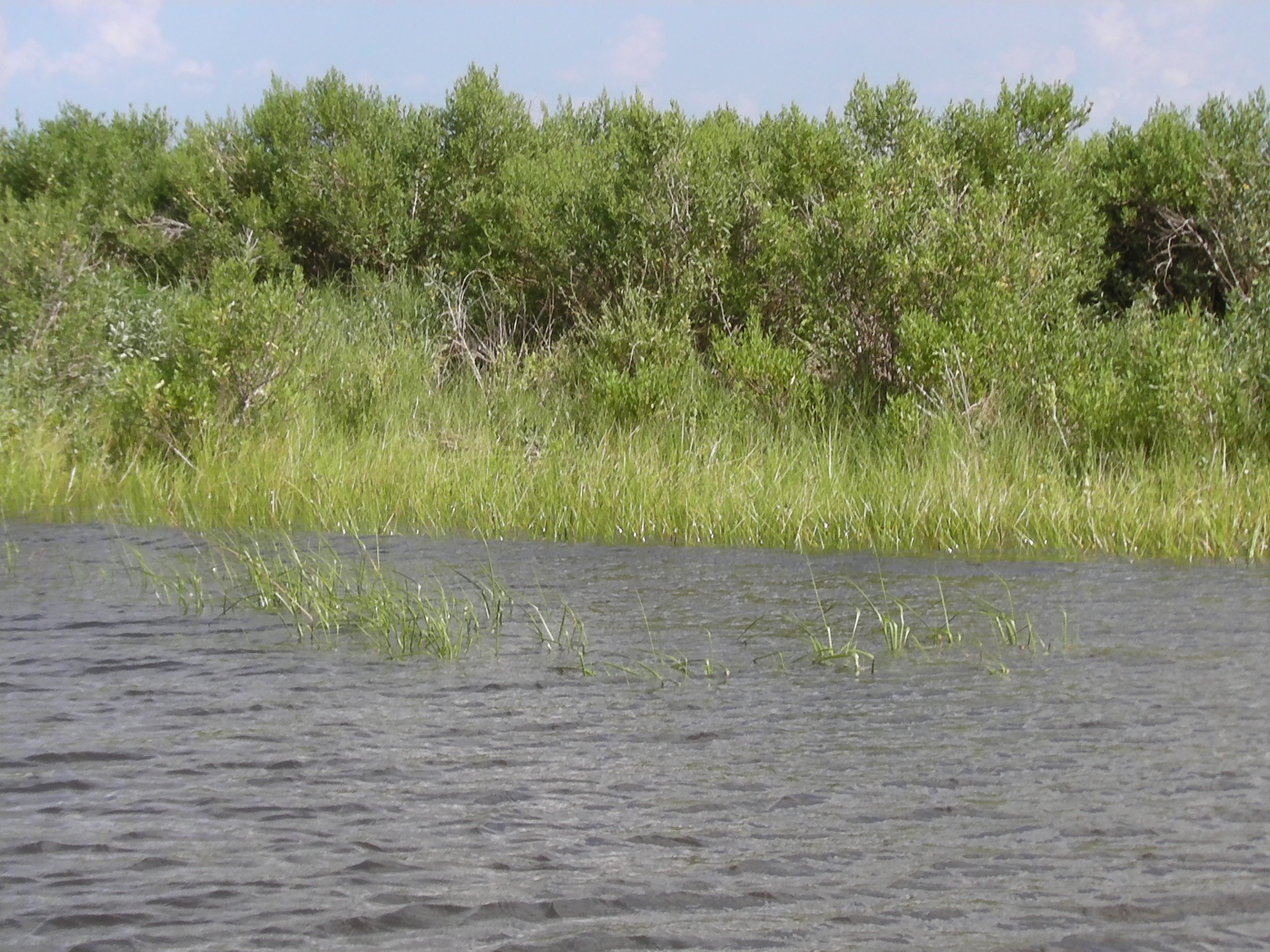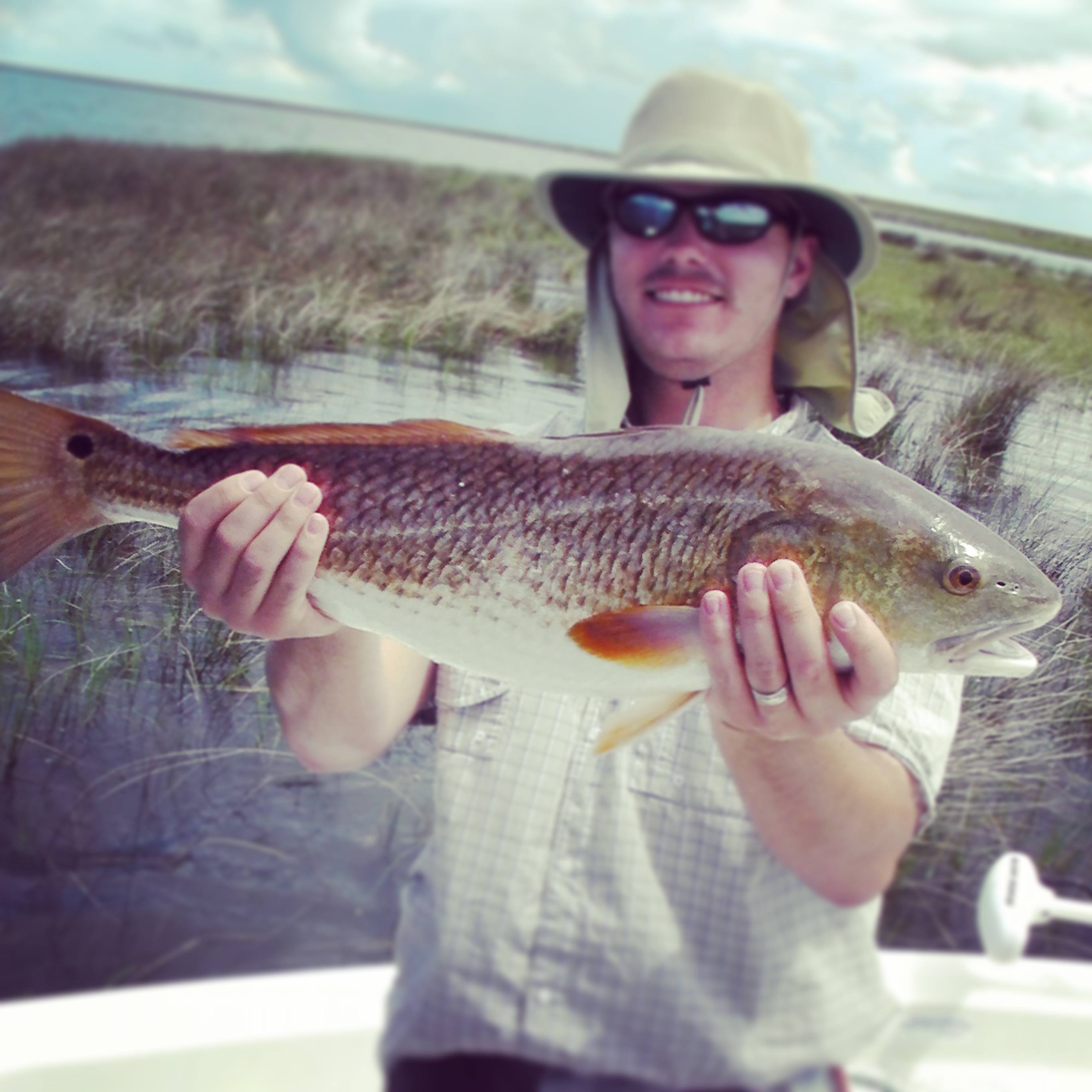I have been fishing shorelines near "big water" that is protected from strong wind. Read on to learn exactly where.
High Water and Flooded Grass
Some examples of this are Lake Eloi, the MRGO and Lake Fortuna. Since the water has been high from strong east winds (around 20 knots), I have been paying attention to flooded grasslines and broken up marsh.
This strategy has been yielding fishing success! Typically, trout are up against the grass or within 25 yards while redfish are up against and inside the grass. Making quality casts is key.
These types of shorelines will help you find the bite:

Flooded grasslines are great areas for baitfish to hide. The specks and reds stack right on top of them.
Small Fish = Time to Roll
I have found that if I only catch small fish right away, then that's probably all that is there. Bait-sized croakers and pinfish are a dead giveaway that is all you're going to catch.
If there isn't something like a trout or red to make that croaker run and hide then you're better off picking up anchor and going somewhere else.
That's not to say desirable fish won't show up, but in the last week that has not been my experience. If I catch catfish, ladyfish or any other kind of trash fish I will usually leave within five minutes.
Most of the time I have had to bounce around, but it's worth it as I am not still not burning as much gas as I would running around Breton Sound.

Note the flooded grass in the background. This is key!
Easy-to-Use Tackle
I am using a different fishing rig than what I used to employ. It's called the Inshore Rig and is essentially a Carolina Rig with a clip-on popping cork above it. This tackle has proven to be very useful, tangle free and easy to cast for my customers. Of course, I have been catching fish on it!
It is important that when casting for redfish you get that cork right up against the flooded grass. Generally, I will reel back in and cast again if the cast is not "quality".
Knowledge Bomb
Even if the cork flies into the grass then you can gently pull it out and let it plop into the water.
More on Trout
While trout are on the shorelines of the MRGO they seem to congregate away from the shoreline and more towards the drop off of the old ship channel. So, cast off one side of the boat towards the flooded grass for redfish and then out into the open water for trout.
Summary
When the south and east winds pick up, water will be blown into the marsh and levels will rise. This can make tough fishing in large bodies of water like Breton Sound, where most trout are spawning. So I make the choice to stay inside the marsh and avoid rough seas.
This works just fine as baitfish like pogies will also be blown into the marsh. Finding the pogies usually equates to redfish and speckled trout being stacked on them.
Tight lines, y'all!
